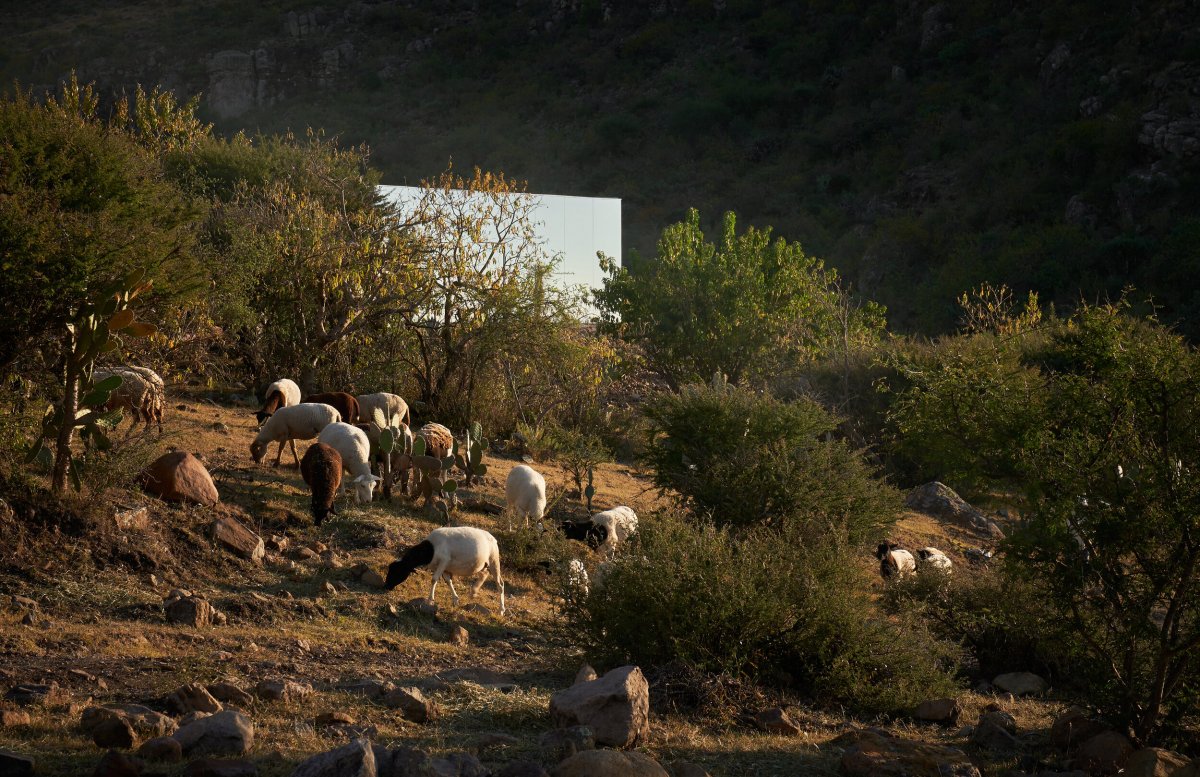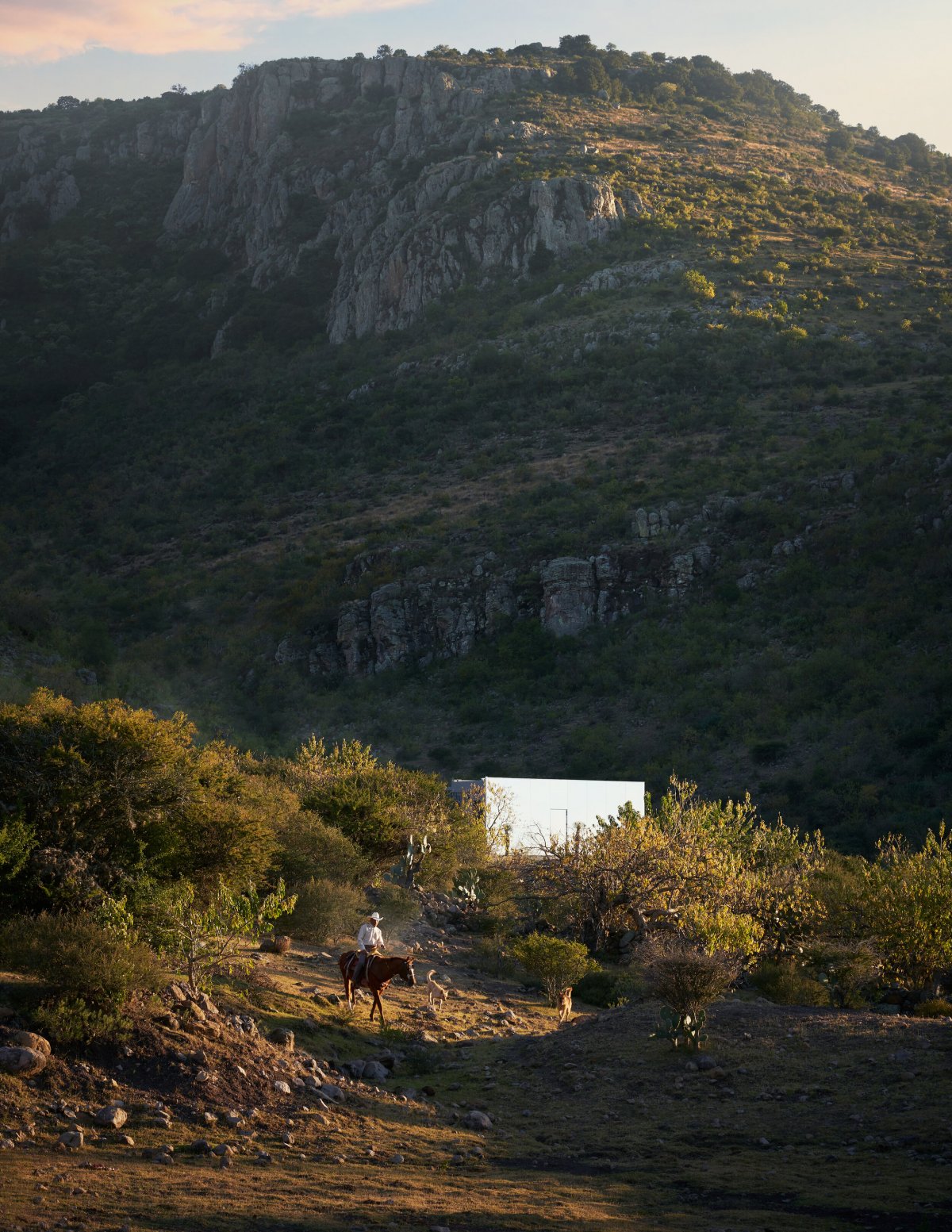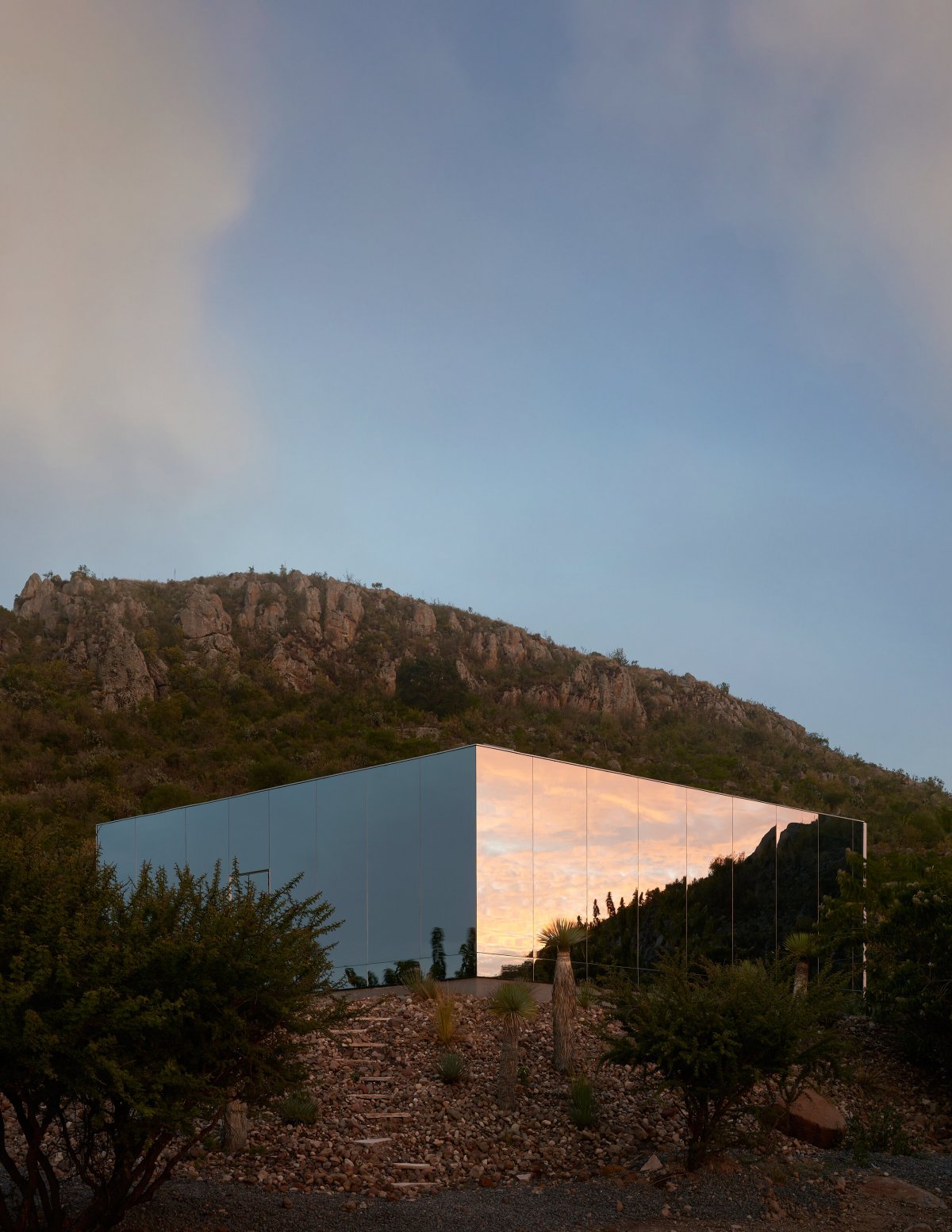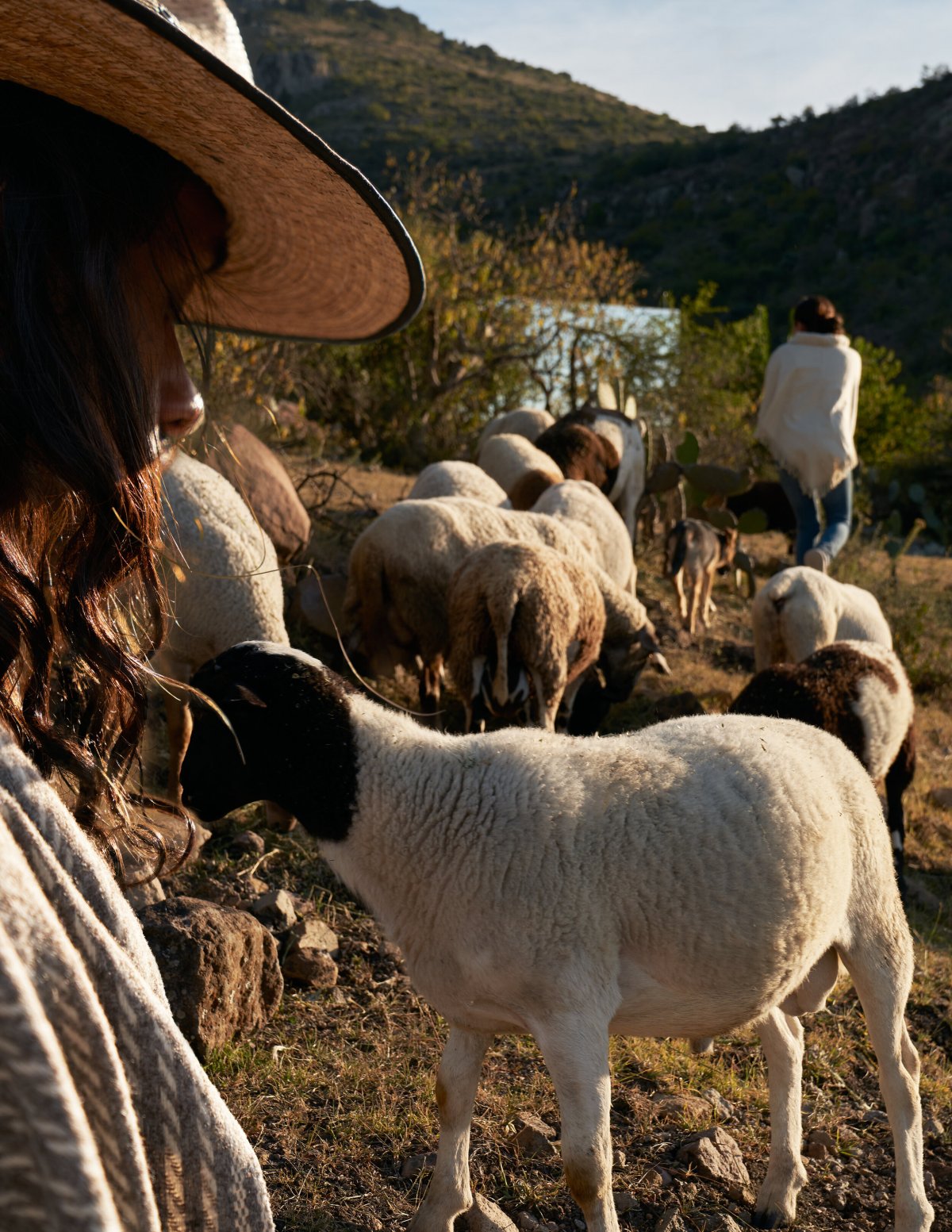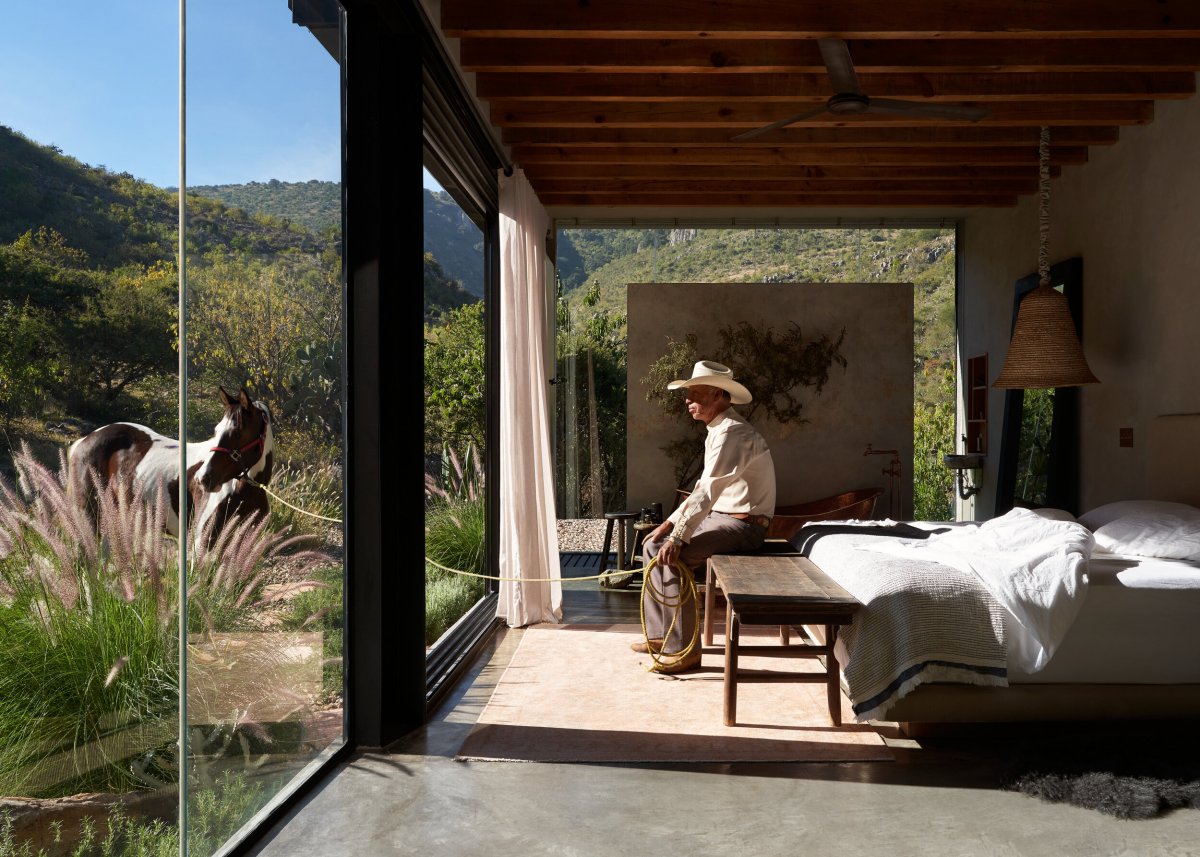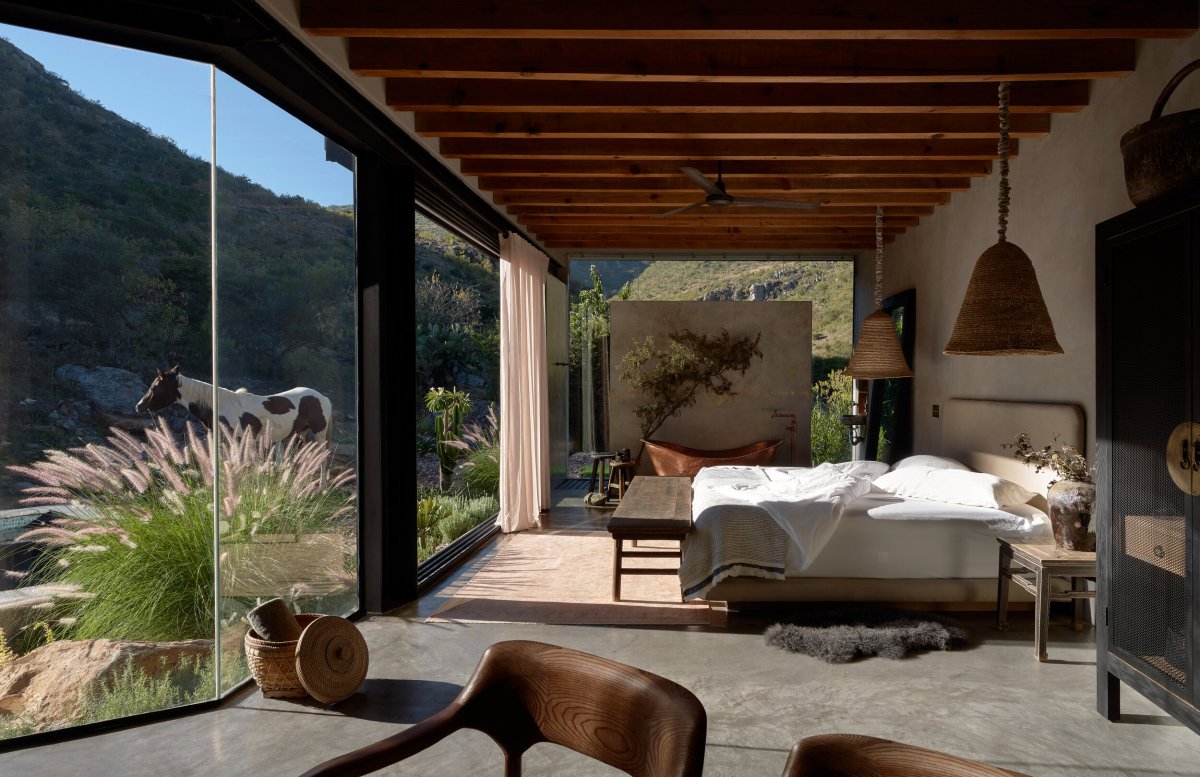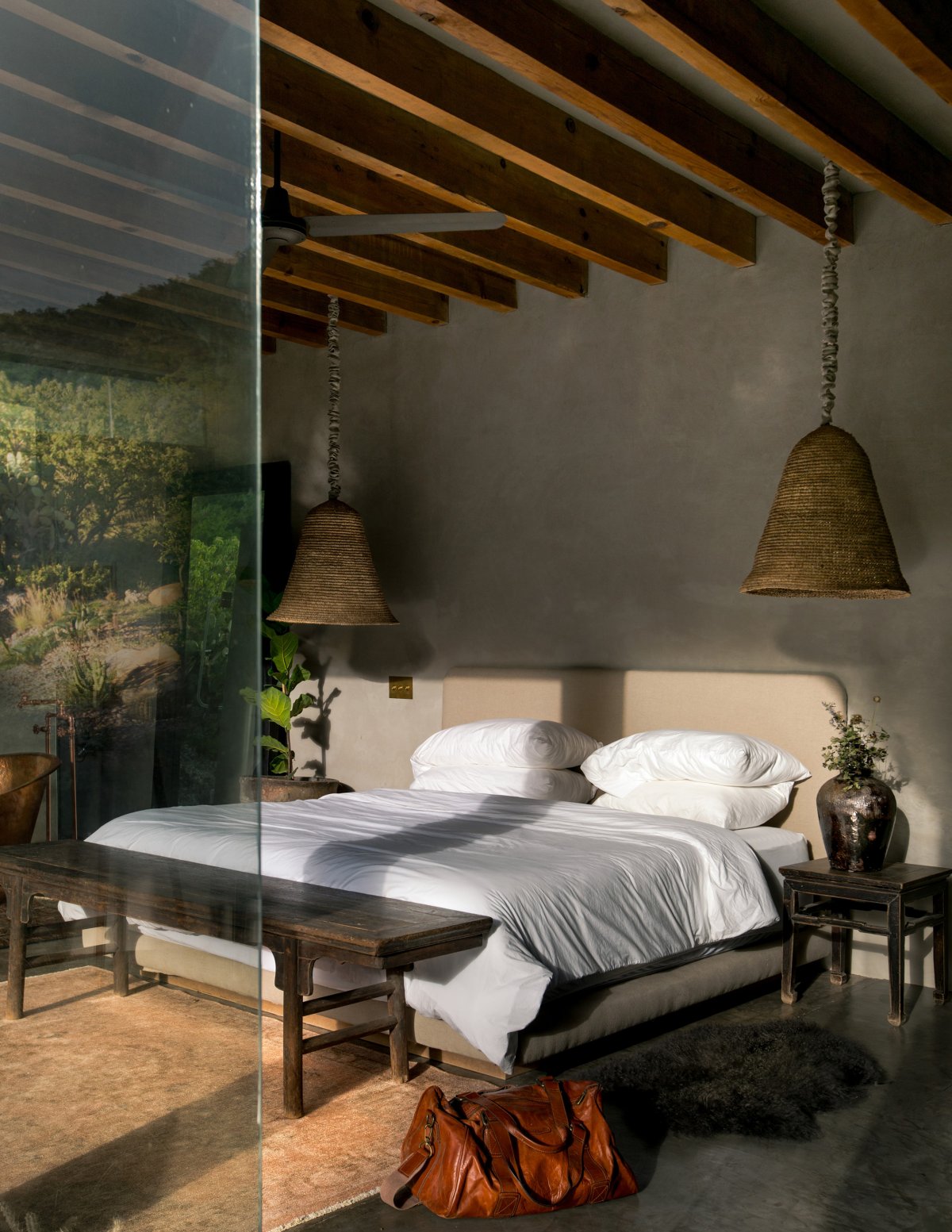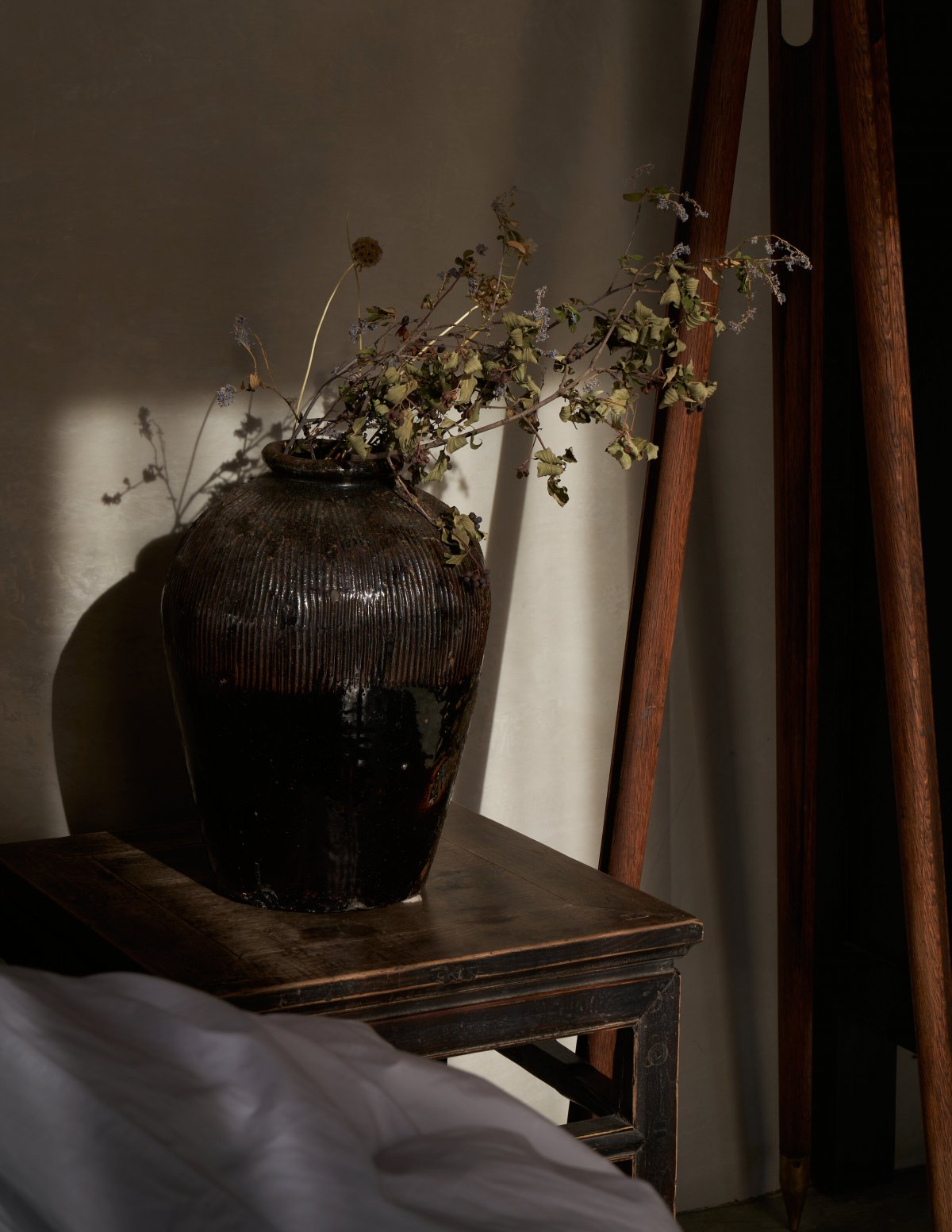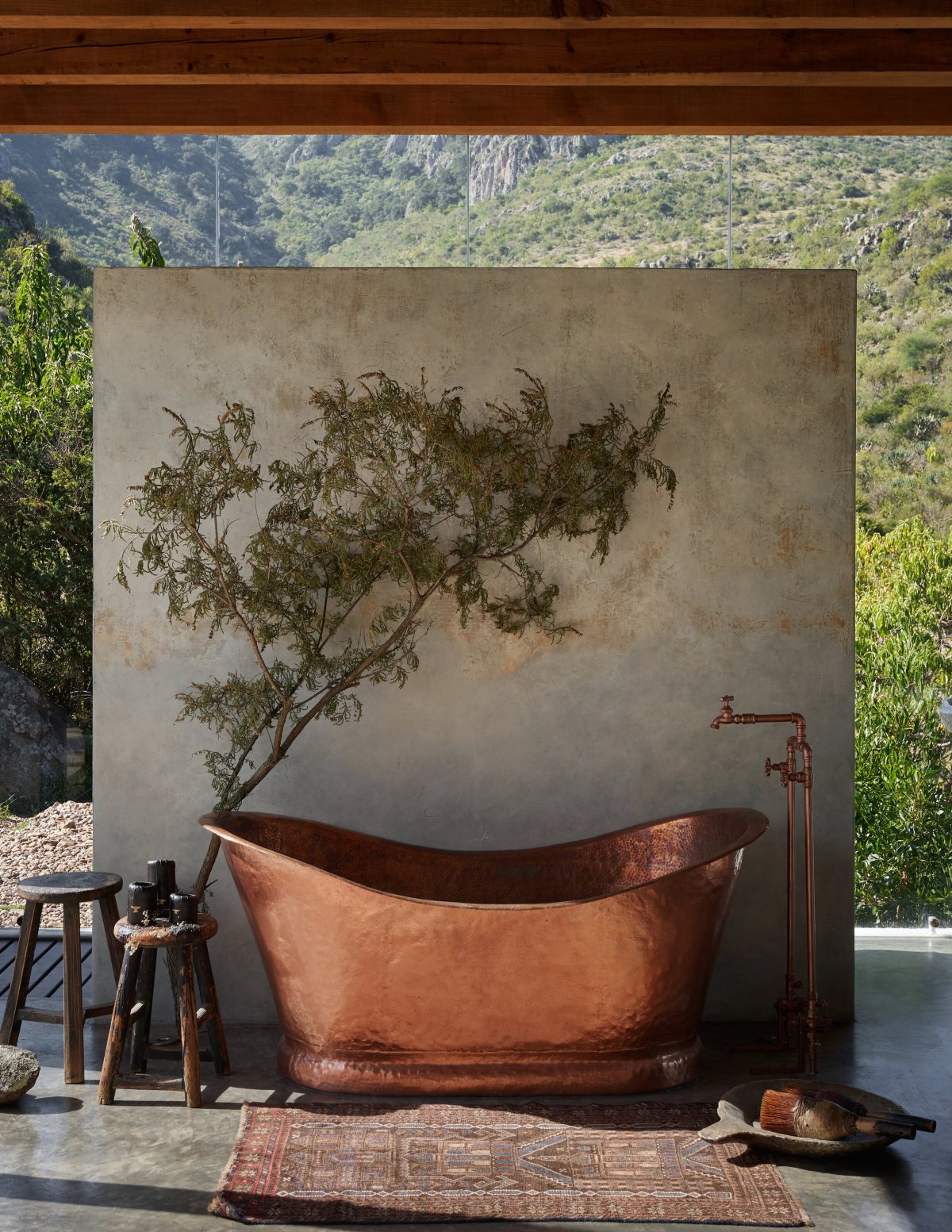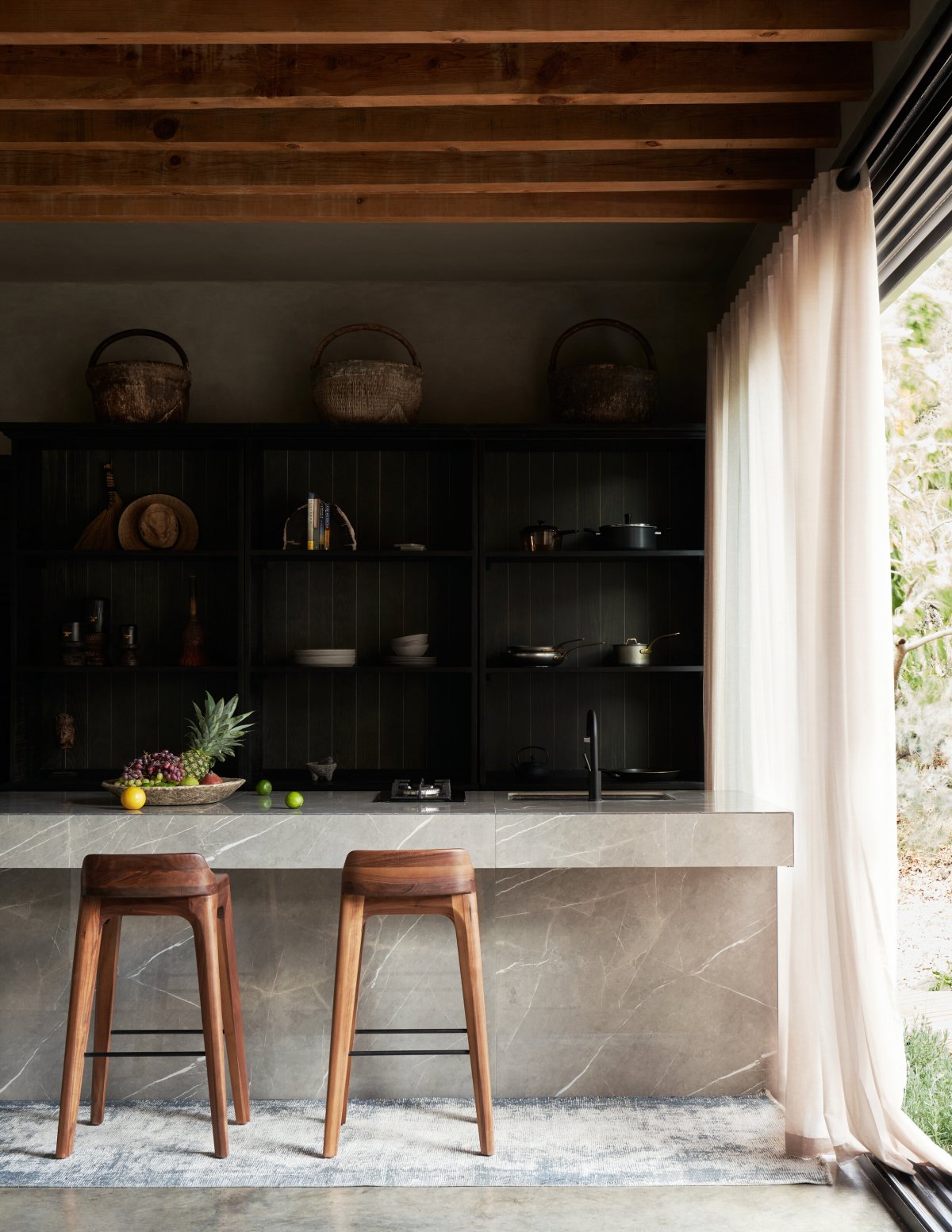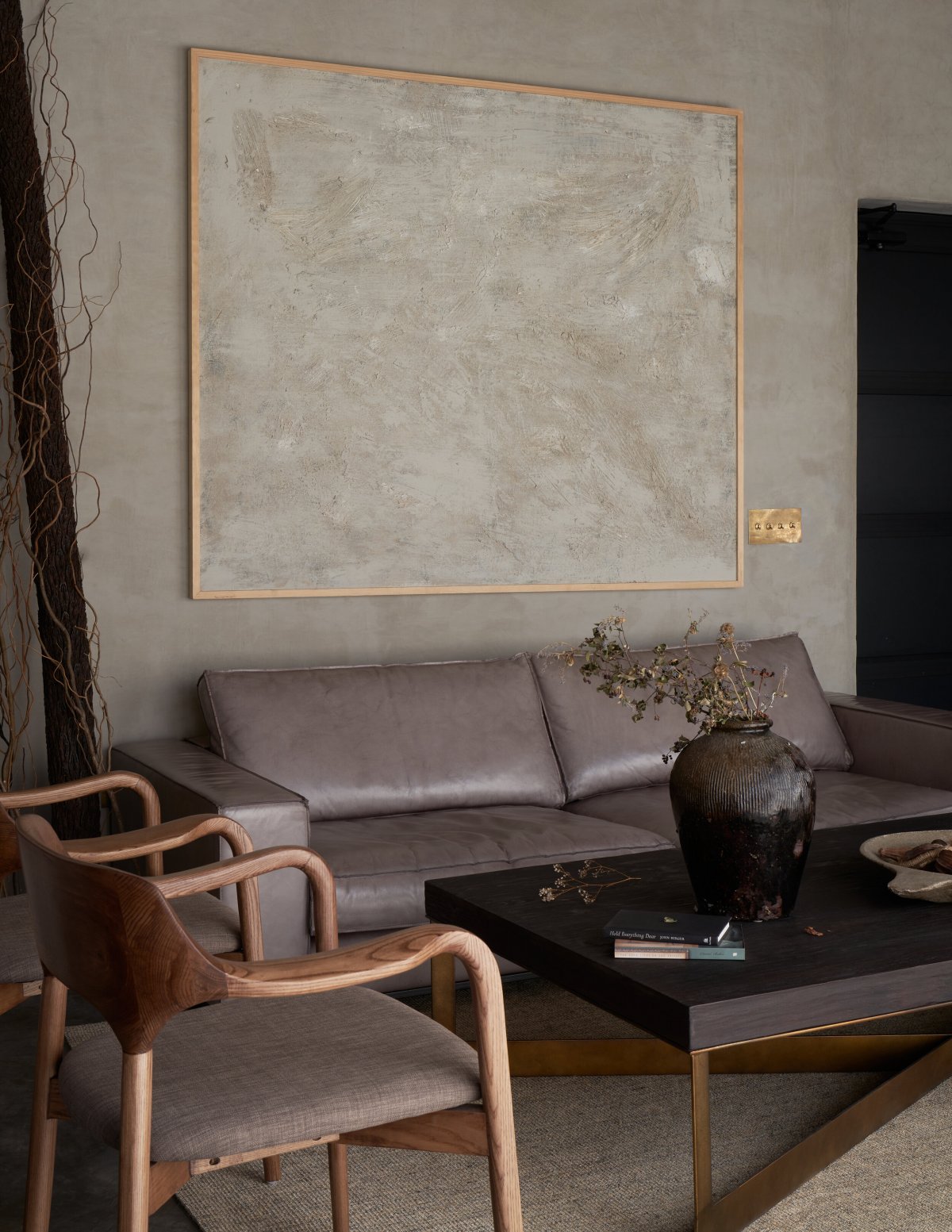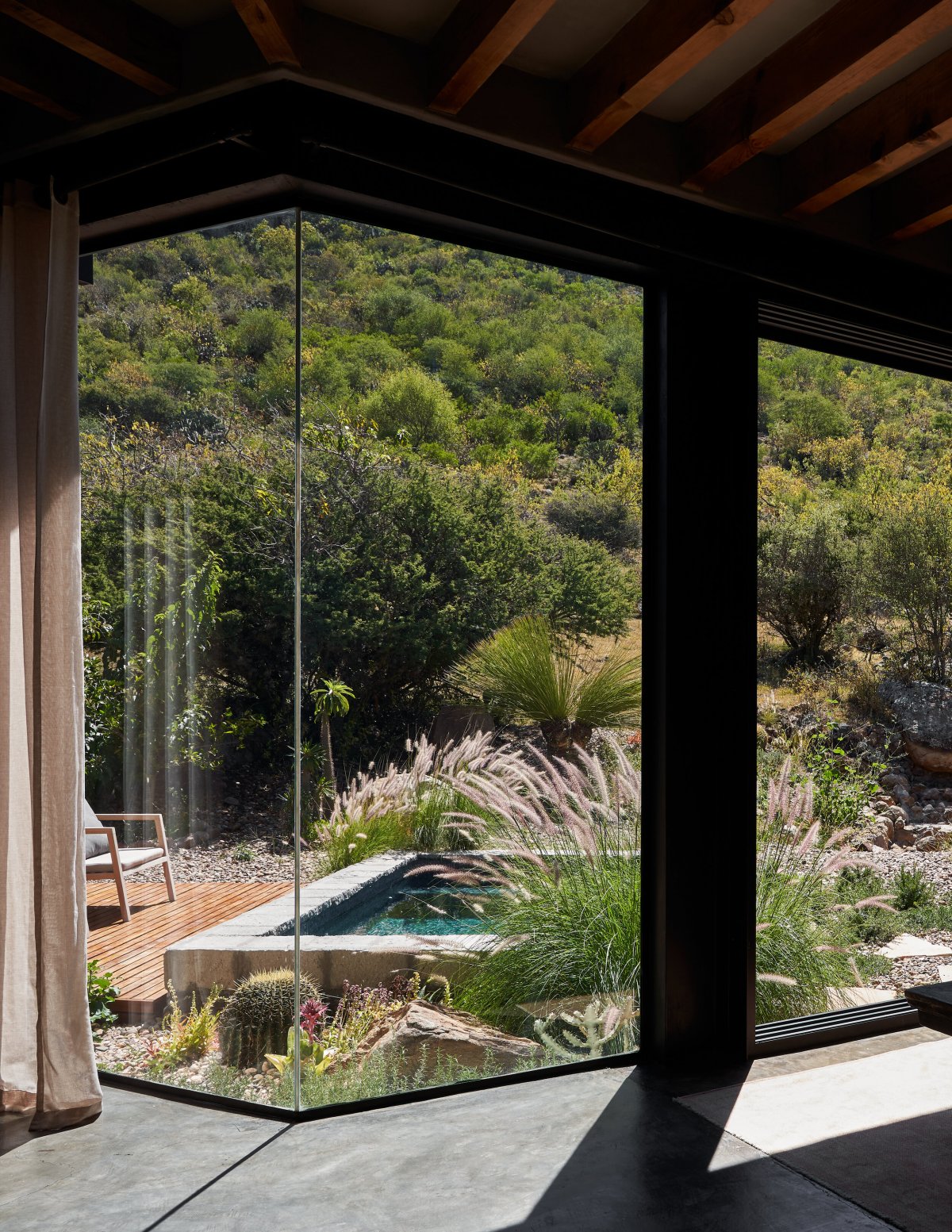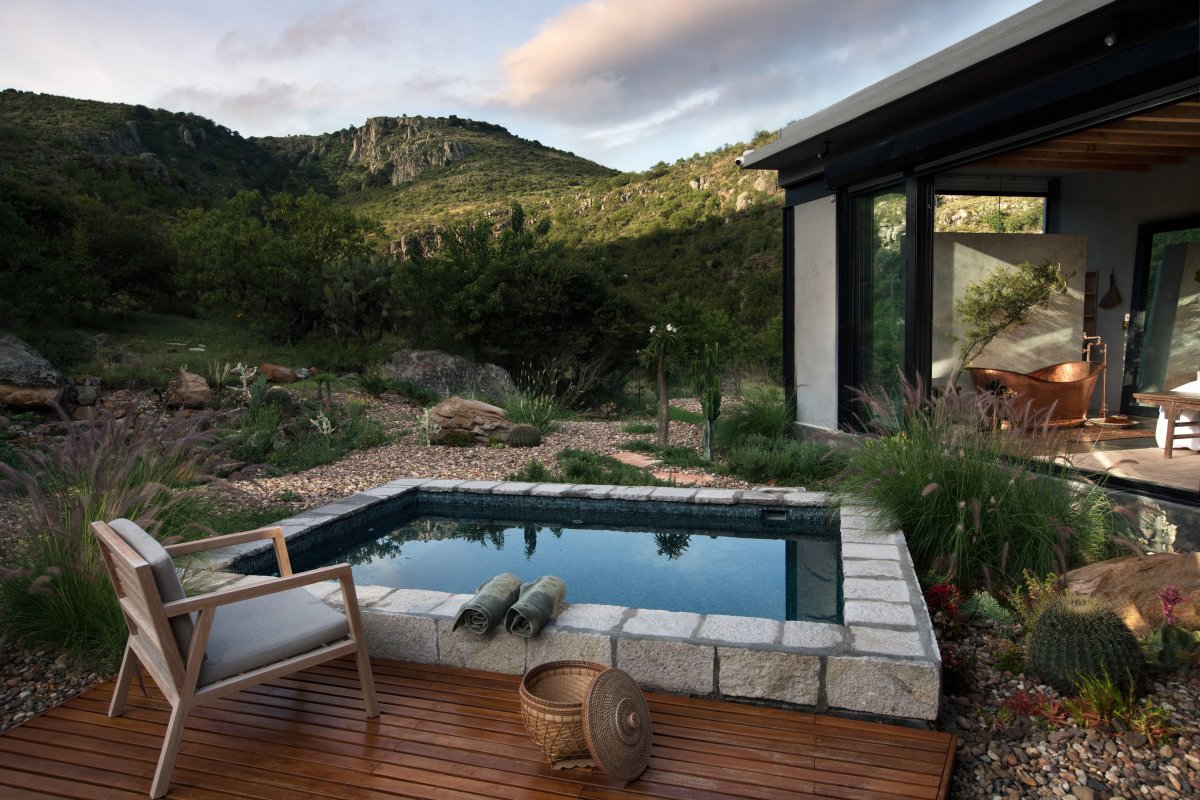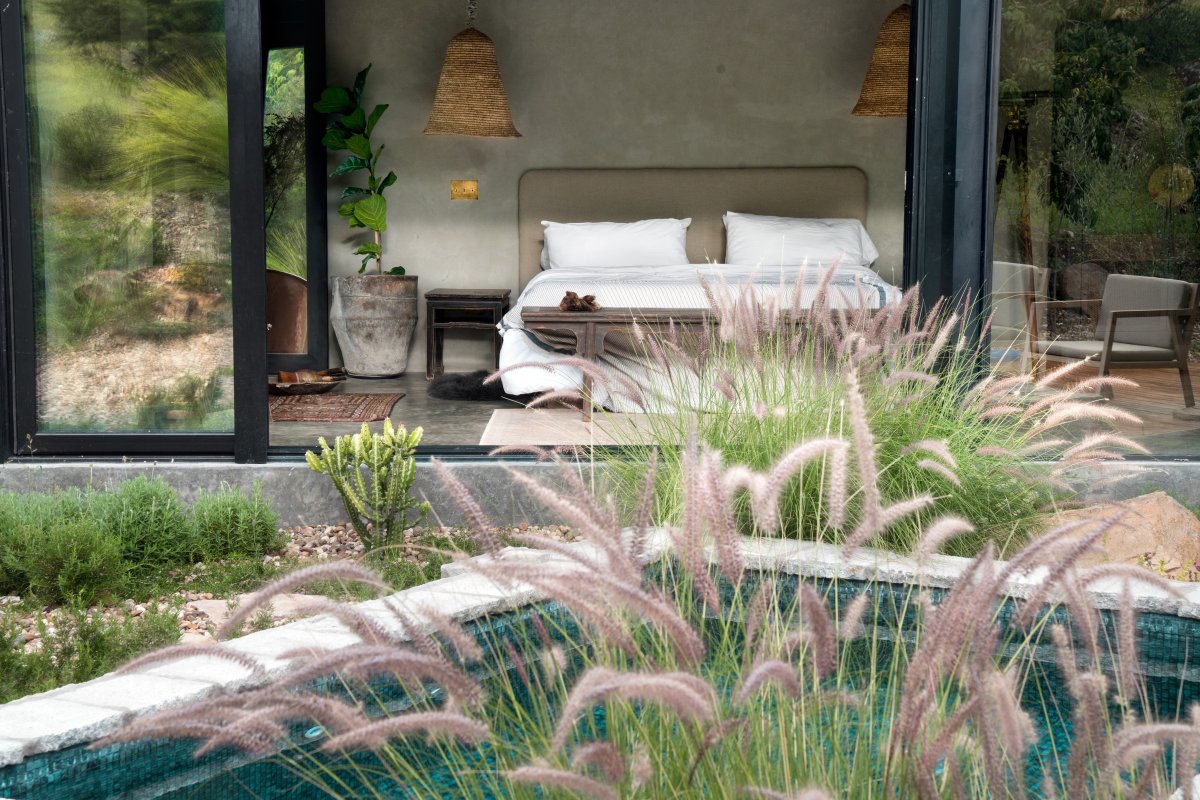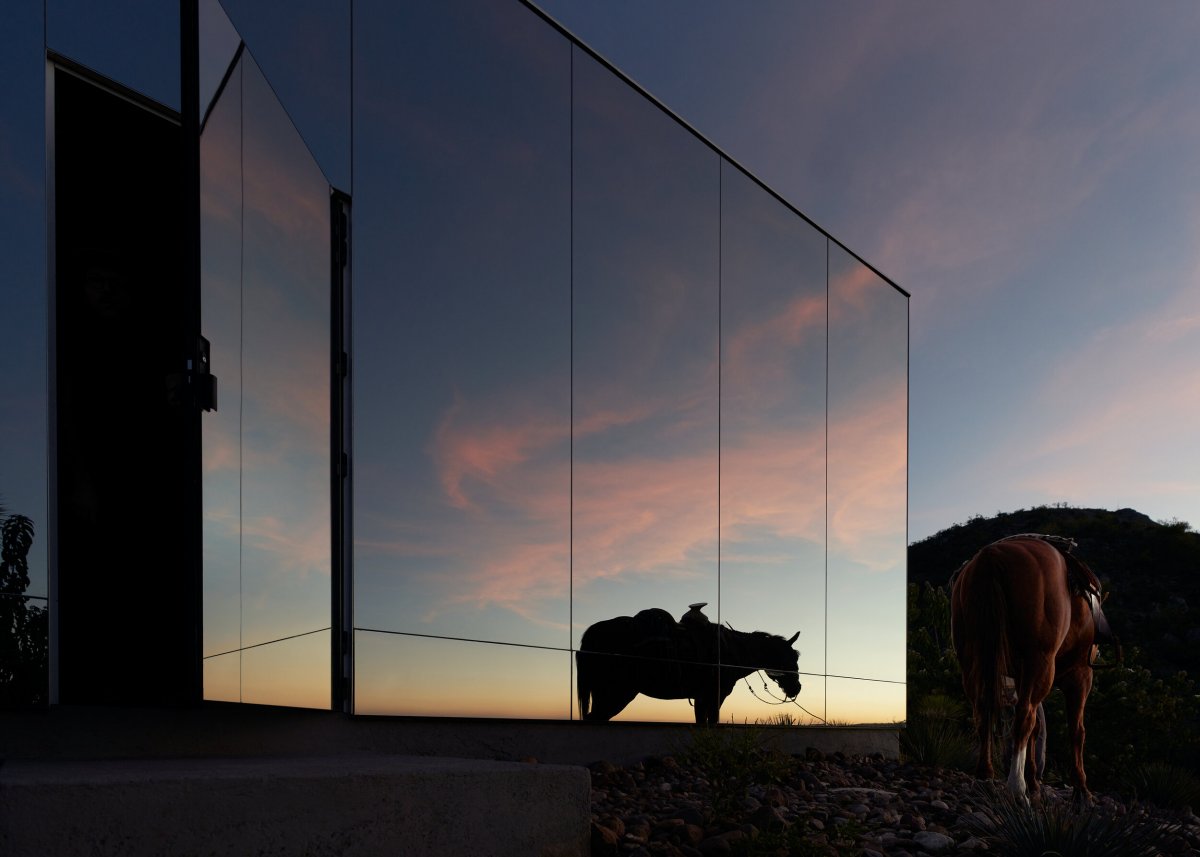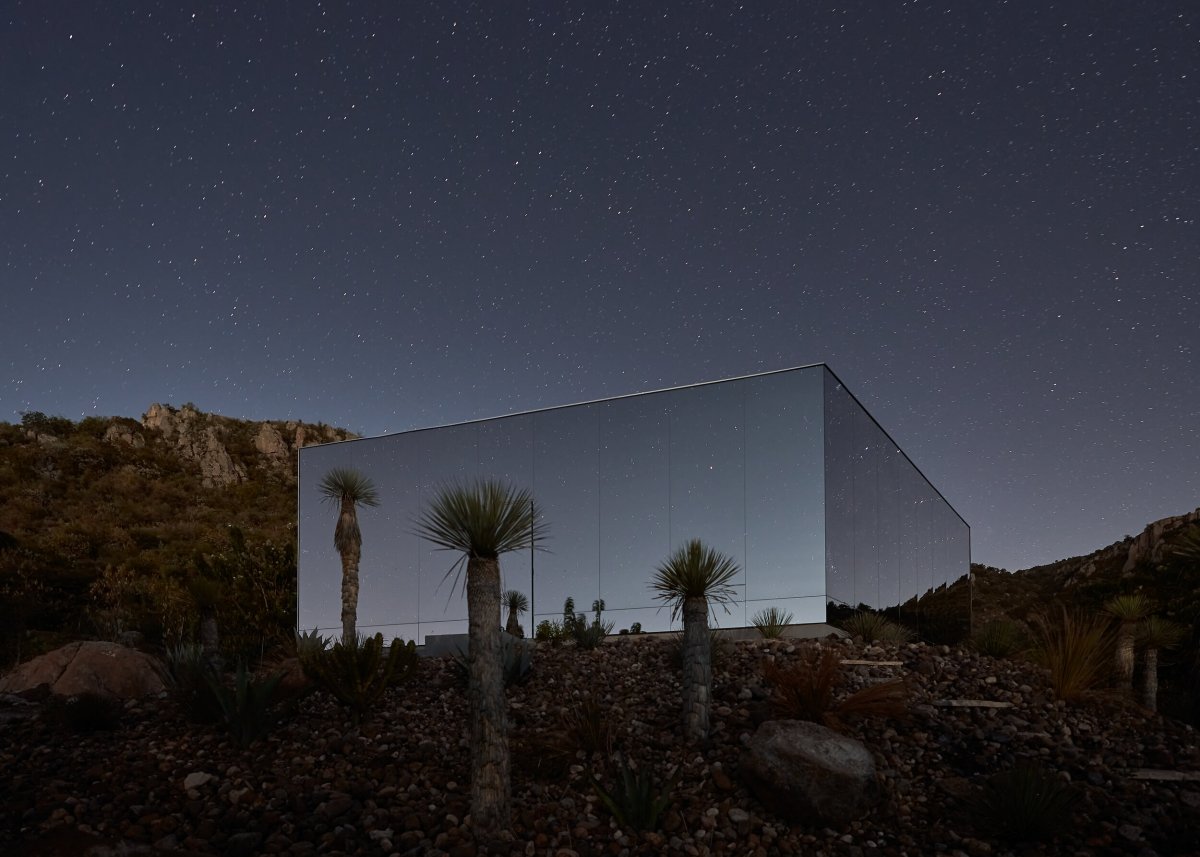
Conceived as an off-grid hideaway for two – by Mexico-based Singaporean writer and designer Prashant Ashoka –Casa Etérea is a 75-square-metre dwelling that draws all its power from solar energy; its water supply from collected rainwater; and uses a patterned ultraviolet coating on the mirror making it visible to birds while remaining reflective to the human eye.
Ashoka's vision is to create a natural theatre, so sustainability is key to achieving true and complete integration with the environment. Working from an intention to leave the landscape untouched, the foundation of the house was built entirely from rock collected off the mountain. And by utilizing site orientation, efficient ventilation design, and insulated glass, the house naturally regulates temperature in the semi-arid desert climate of the central Mexican highlands.
The open-planned concept consists of two rectilinear volumes that merge at a 120-degree V-shaped intersection – drawing an angular likeness to a staggering ravine visible through the exposed glass shower. From the central living space and bedroom, floor-to-ceiling sliding glass doors frame vistas of towering cliffs, while opening to connect with a decked patio and pool area shaded by olive and pomegranate trees. Behind the intimate kitchen, a rooftop stairway access doubles as a utility room, and remote-controlled outdoor PVC shutters were added to provide security and privacy.
Heavily inspired by the concept of “emotional architecture,” – coined by Mexican architect Luis Barragán and sculptor-painter Mathias Goéritz – Casa Etérea achieves this deeper sensory resonance by using exterior mirrored panels to create a visually abstract and interactive experience.
As it catches first light, the house gleams as a phosphorescent blue-tinged box, standing in glassy contrast against the felted nocturnal blackness of the mountainside. And in the ombre hues of sunset the volume scintillates against the landscape like a mirage, before disappearing entirely – its structural boundaries never once attempting to alter the surroundings in which it sits. Alluding to this quality of the building, the name ‘Etérea’ translates from Spanish to ‘ethereal’, and suggests a nebulous, otherworldly vision. Both visually and functionally, the project touches on architecture as site-specific installation art and as an extension of the environment.
- Interiors: Prashant Ashoka
- Words: Gina

